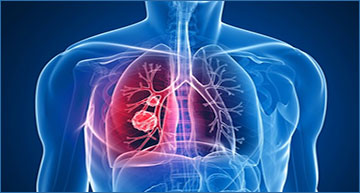
From OncLive by Brittany Lovely
Blocking ligand interaction of HER2 and HER3 in patients with NRG1 fusion–positive tumors has demonstrated a clinically feasible avenue to improve outcomes with the novel agent zenocutuzumab (MCLA-128). By targeting these surface receptors using the “dock and block” approach, investigators have demonstrated the novel bispecific antibody has activity in several tumor types, including for patients with non–small cell lung cancer (NSCLC).
Although incidence of NRG1 fusions is only 0.2% across cancers, most are identified in lung cancers including NSCLC and the invasive mucinous adenocarcinoma subtype. Because of the rarity of NRG1 fusions, the global eNRGy1 registry was established to identify the fusion among patients with lung cancer. As testing for patients with NSCLC increases to identify actionable markers, the identification of NRG1 fusions may also experience an uptick with RNA sequencing, making agents with demonstrable activity of need.
eNRGY and Early Access Trials Demonstrate Durability, Safety of Zenocutuzumab
Early preclinical studies of zenocutuzumab demonstrated that patient-derived and isogenic cell lines expressing NRG1 fusions demonstrated high sensitivity in lung cancer cell lines…
“[eNRGy] is the first clinical trial to evaluate prospectively the role of ERBB3 inhibition in NRG1– positive tumors. I want to highlight the high recruitment, since [the 2021 ASCO meeting]: 49 patients. This speaks about the importance, the need, and the feasibility of performing studies in low prevalence tumor indications,” Garralda said.
“[Zenocutuzumab] has the first breakthrough therapy designed by the FDA for NRG1-positive tumors. It’s the first time we are targeting a ligand. And it’s the first time we are doing it through an antibody that targets it in an indirect way. Bispecifics hold the promise of extending the possibilities of monoclonal antibody therapeutics.”
As investigative efforts continue with zenocutuzumab, key considerations include the prognostic role of NRG1 fusions.
“There is evidence that in NRG1 [fusion–positive] NSCLC, patients appear to respond less to other therapies. We need to establish these to fully understand the value of targeting NRG1… and we need to understand brain activity, which is particularly relevant in NSCLC,” she said.
RNA-based Testing for NRG1 Is Key
In terms of testing for NRG1 fusions, the eNRGy1 registry report noted that the most common method was RNA sequencing with 74% of cases (n = 81) detected. Among RNA-based assays, the amplicon-based RNA sequencing using anchored multiplex PCR identified 62% of fusions, reverse transcription PCR identified 27%, and expression analysis using nCounter identified 11%. For DNA-based sequencing which was used for 26% of cases (n = 29), next-generation sequencing (NGS) and fluorescence in situ hybridization were nearly equal in their detection rates at 52% and 48%, respectively. Investigators noted that hybrid capture–based testing was used for nearly all NGS tests (93%).
“RNA-based assays appear to be the best molecular testing method to identify NRG1 fusions,” Drilon et al wrote in the findings from eNRGy1 registry. “NRG1 fusion breakpoints, [although]highly heterogenous as demonstrated here, convergently occur in large intronic regions that are challenging to tile and capture by DNA-based assays.”
Additionally, in the data presented at the 2022 ASCO Annual Meeting, Garralda concurred adding that in the eNRGy study, “Of the 83 patients that were presented, 64 were identified based on RNA. And this is important. If we want to look for these fusions, we are going to need to be using RNA based sequencing methods.”
Source – OncLive




